Paintings
Le Corbusier was an architect, but also a well-known artist who created numerous paintings in his lifetime. He often painted lakes and landscapes of his home town in Switzerland in watercolor. In 1920s, he pursued Purism with Amedee Ozenfant, whom he met in Paris. Later in the decade, his works would be influenced by surrealism and compose works such as objets a reaction poetique, an example of works that portray abstract objects such as bones and rocks. His works in the 1930s consists mainly of female figures. In the post WWII era, Le Corbusier would detach himself from the mainstream and focused on symbolic figures such as the Bulls and Icon.
As his painting style transformed from ascetic to nudes, he progressively used more curved and freeform lines. This transformation can also be seen in his architectural works. In addition, conservative use of colors in the 1920s, in both his paintings and architecture, such as Maison La Roche-Jeanneret and Maisons de la Weissenhof-Siedlung, contrast to his post WWII works of Unite d'Habitation in Marseilles and the government buildings of Chandigarh. Much of his paintings and architectural works correspond aesthetically to one another. While architecture must be contested with many rules and restrictions, Le Corbusier used the freedom of art and paintings to experiment new ideas, which were then applied to the design of his buildings.
In addition to gouache, he experiments with email. Email, for its suitability for outdoor use, was employed for some of his door murals. He also worked with other various mediums including canvas, paper, boards and frequently painted directly on walls.
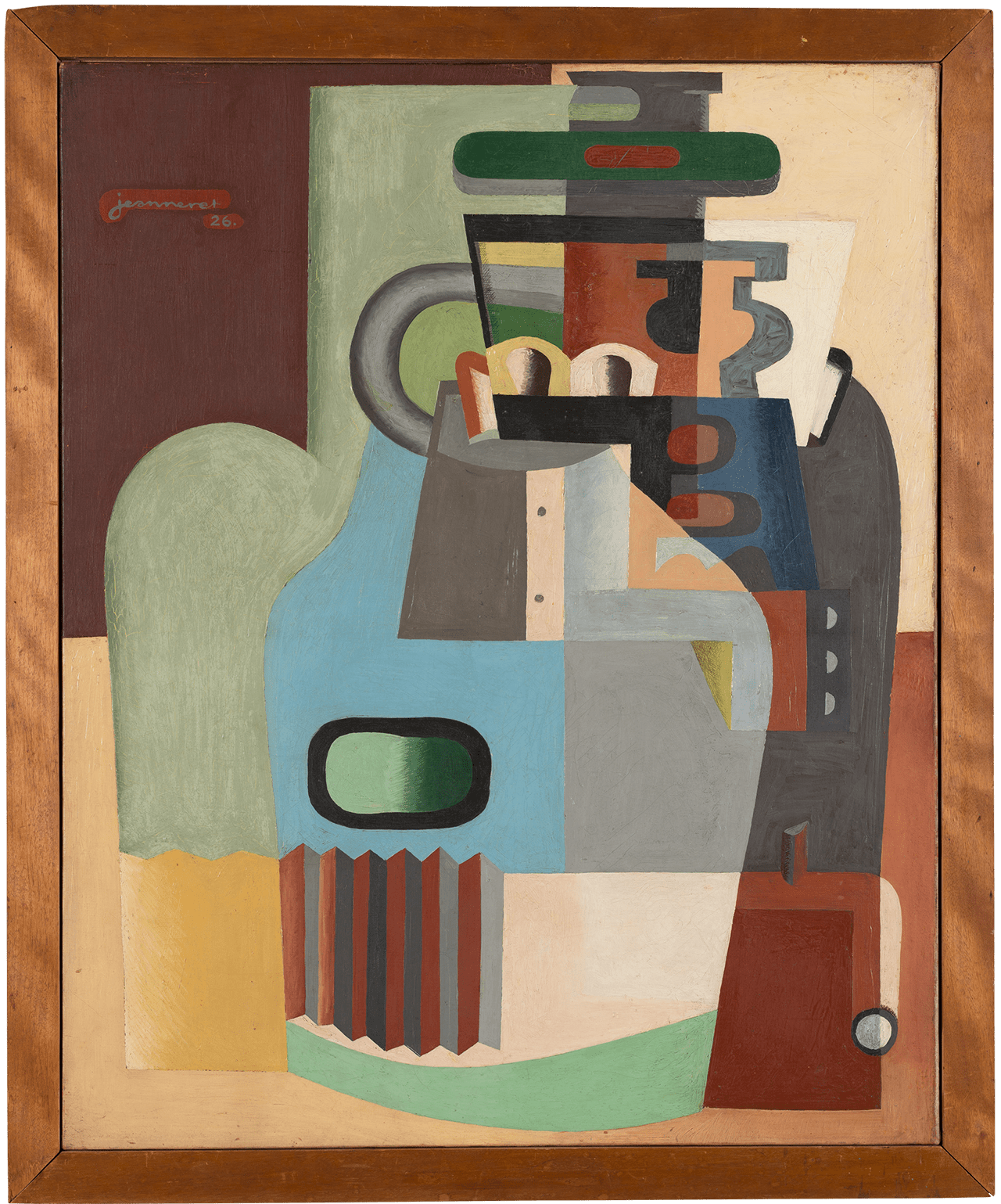
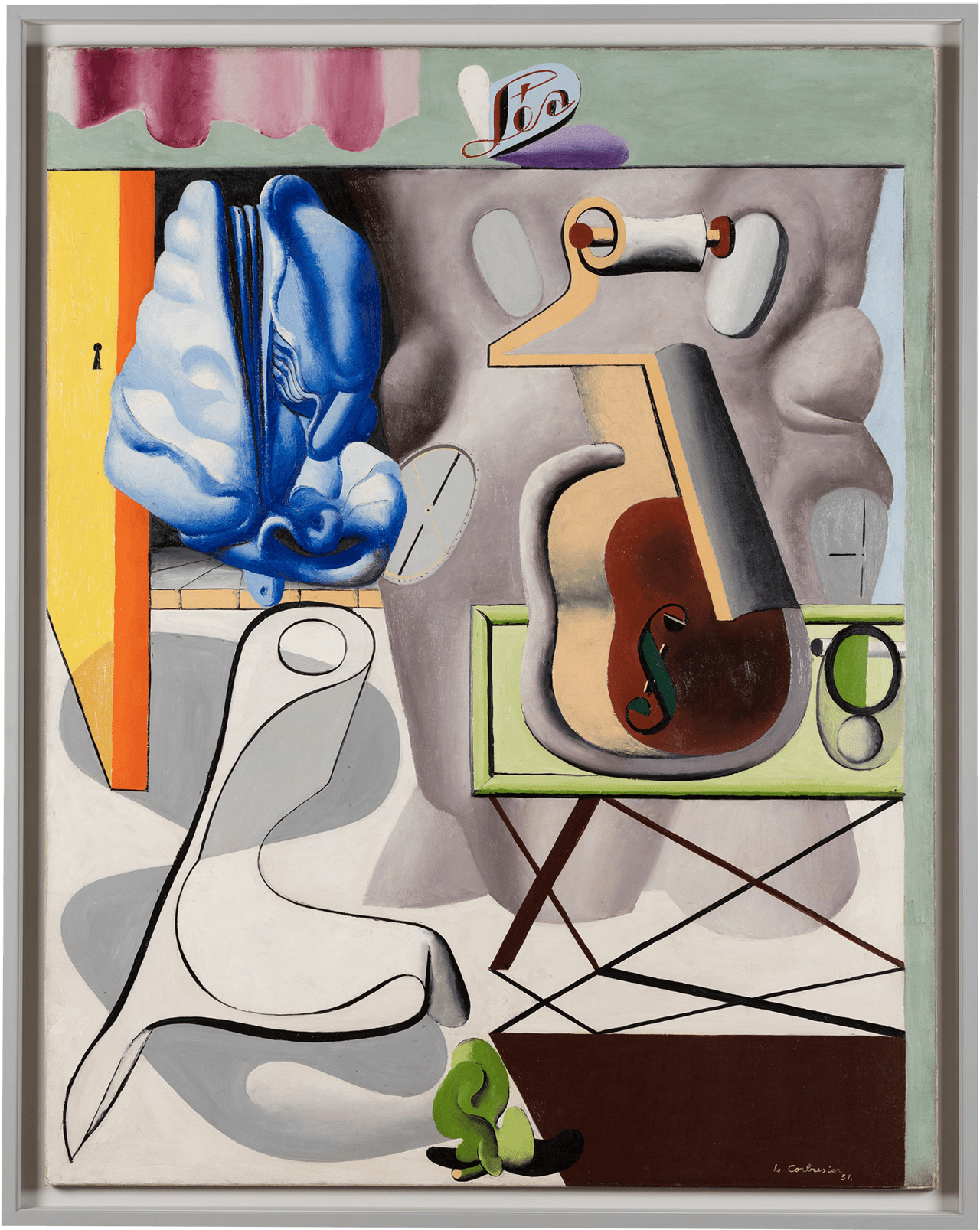
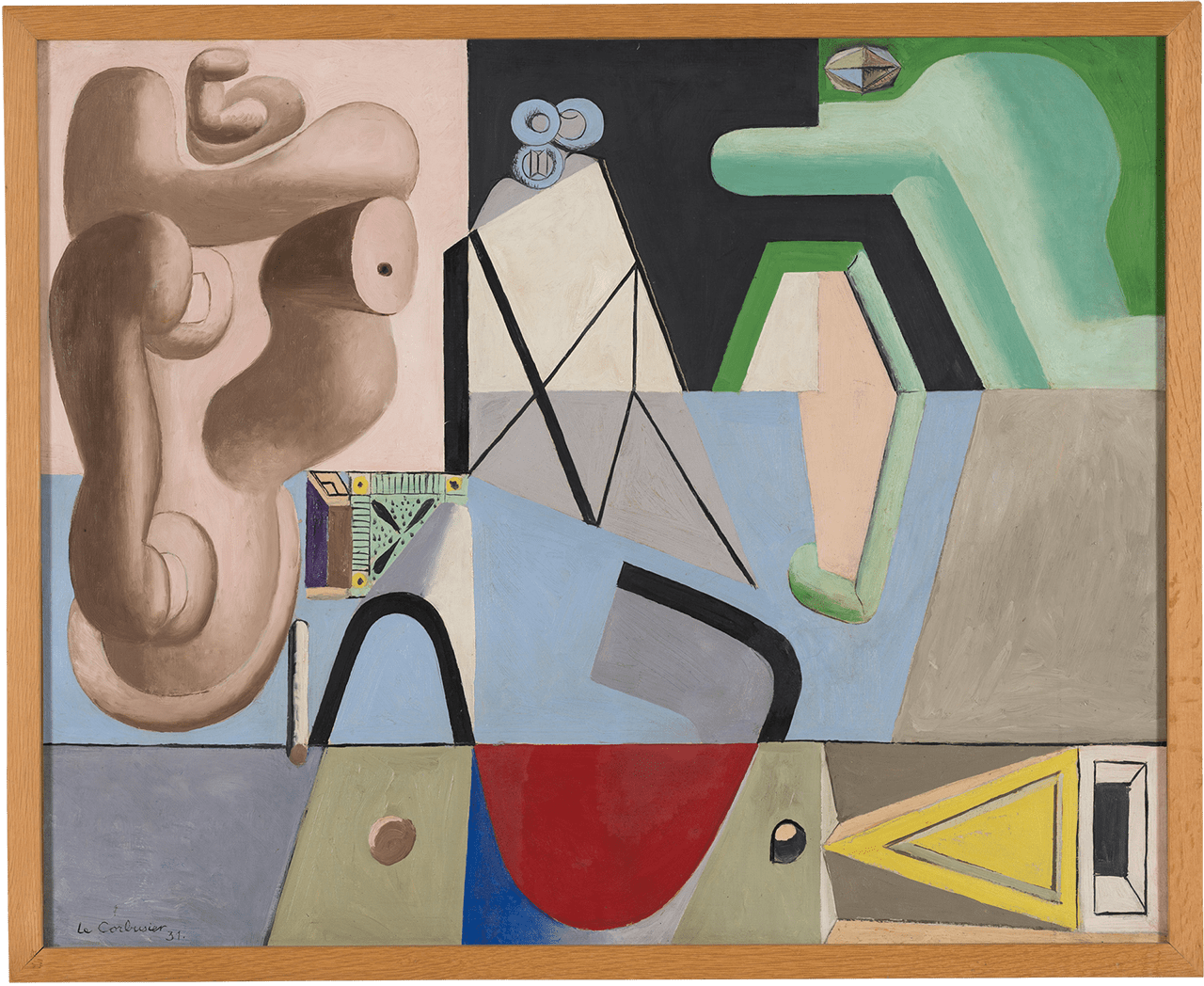
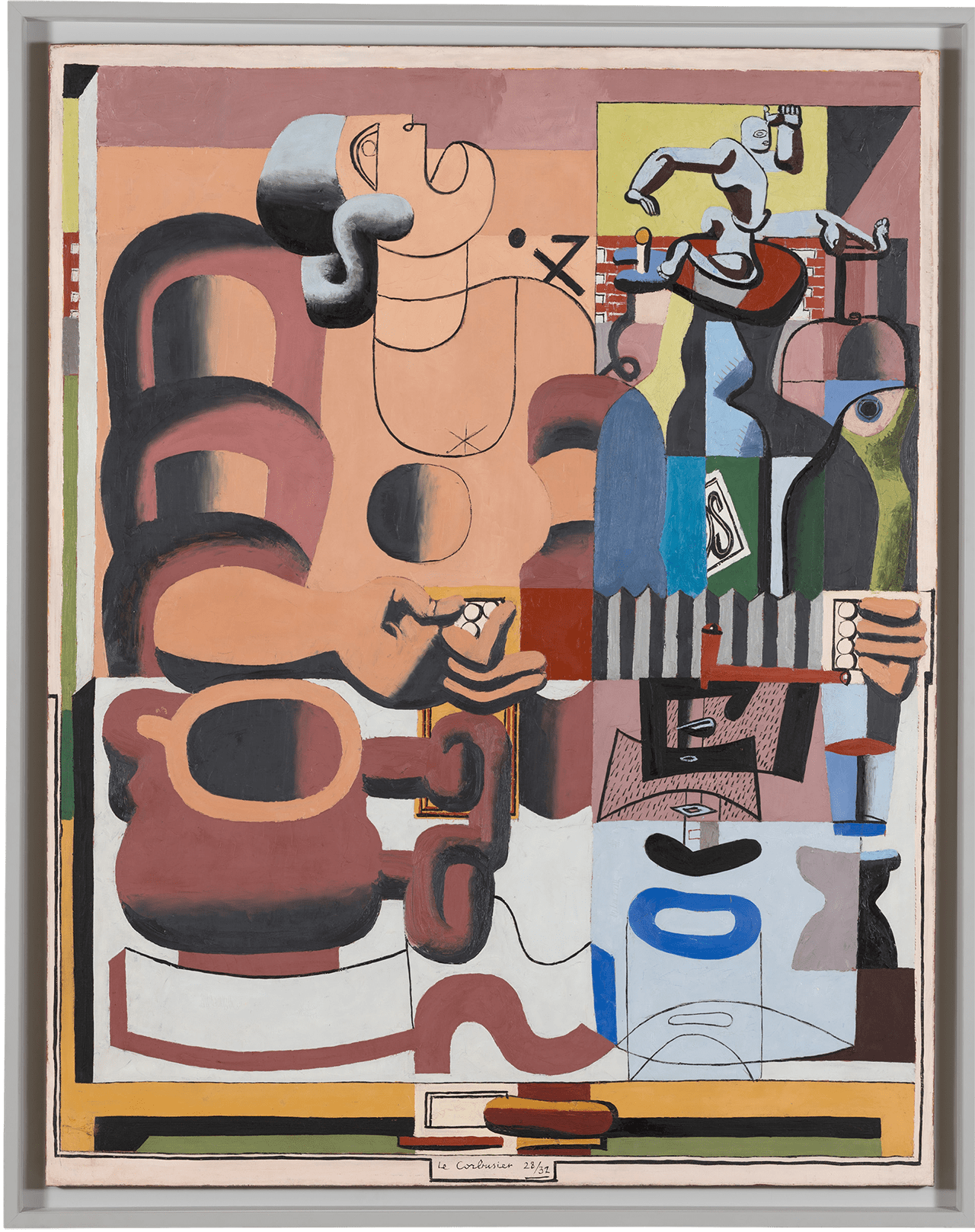
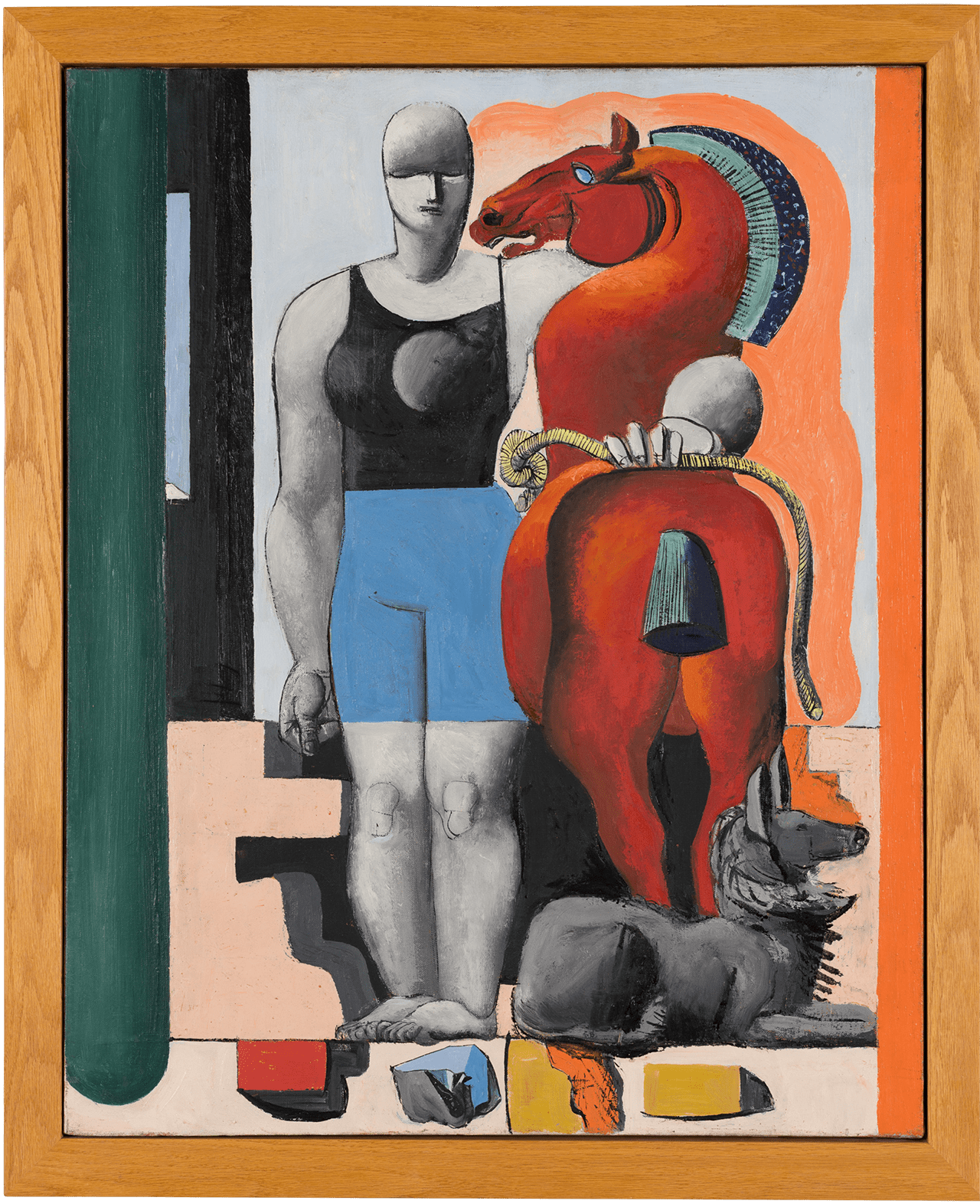
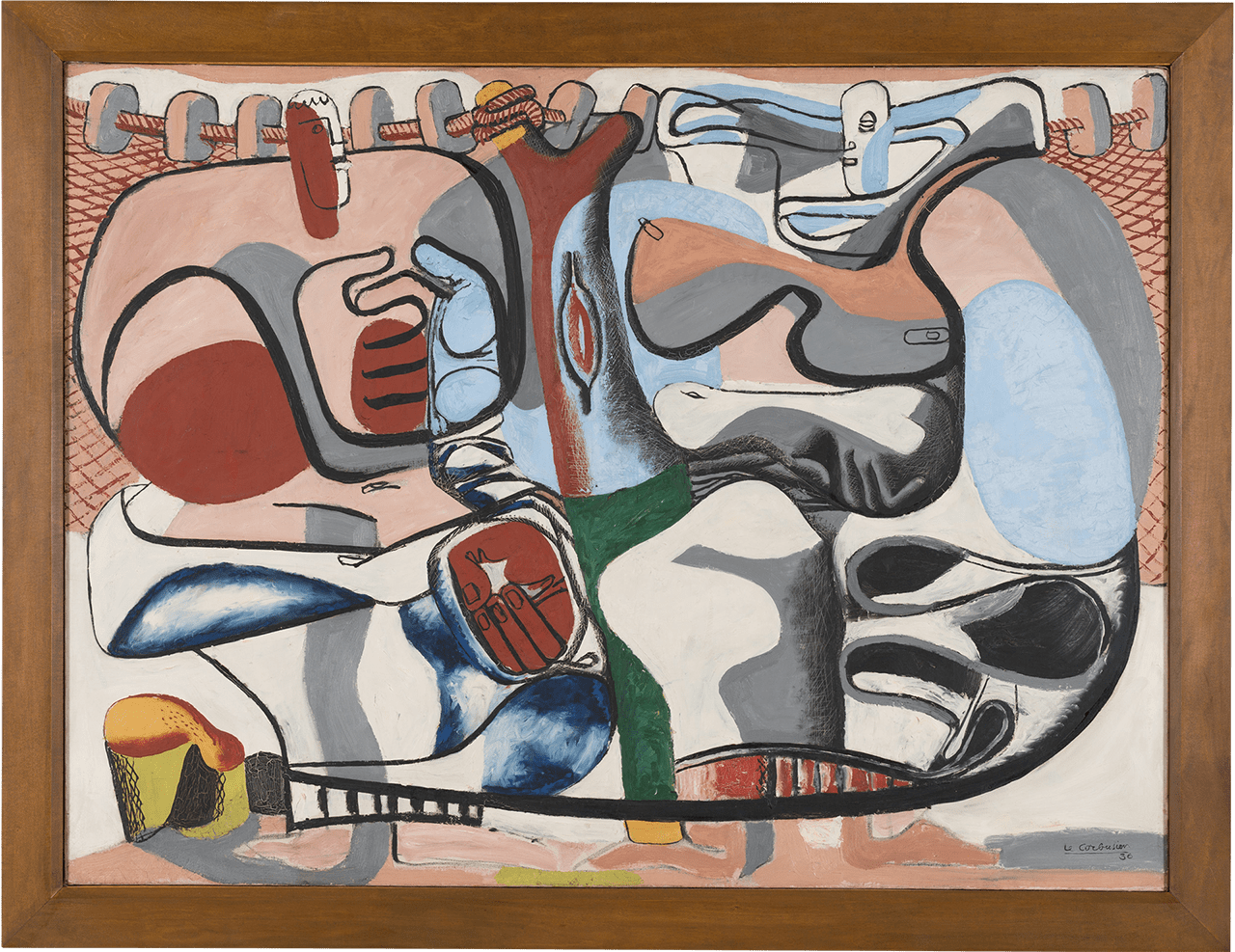
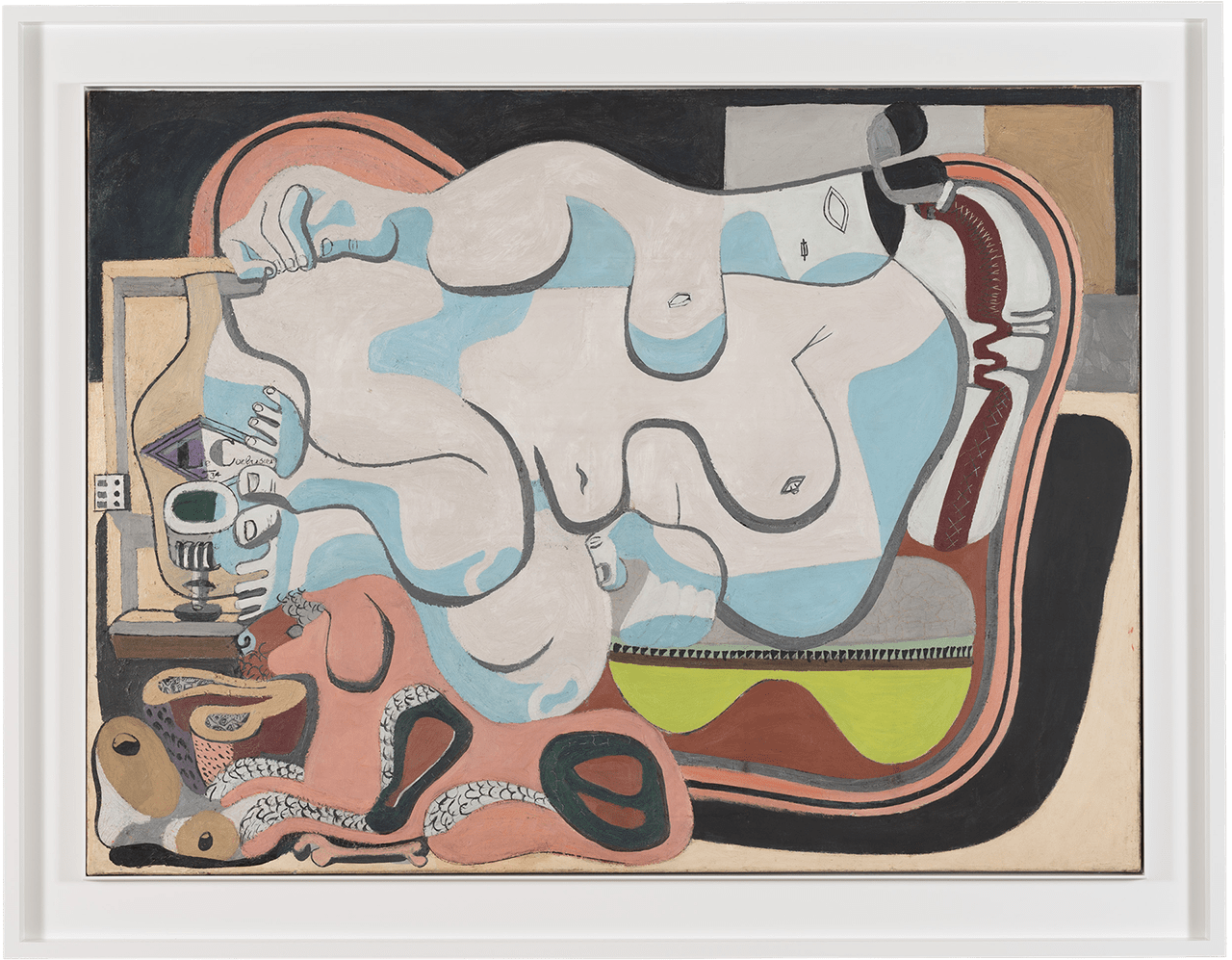
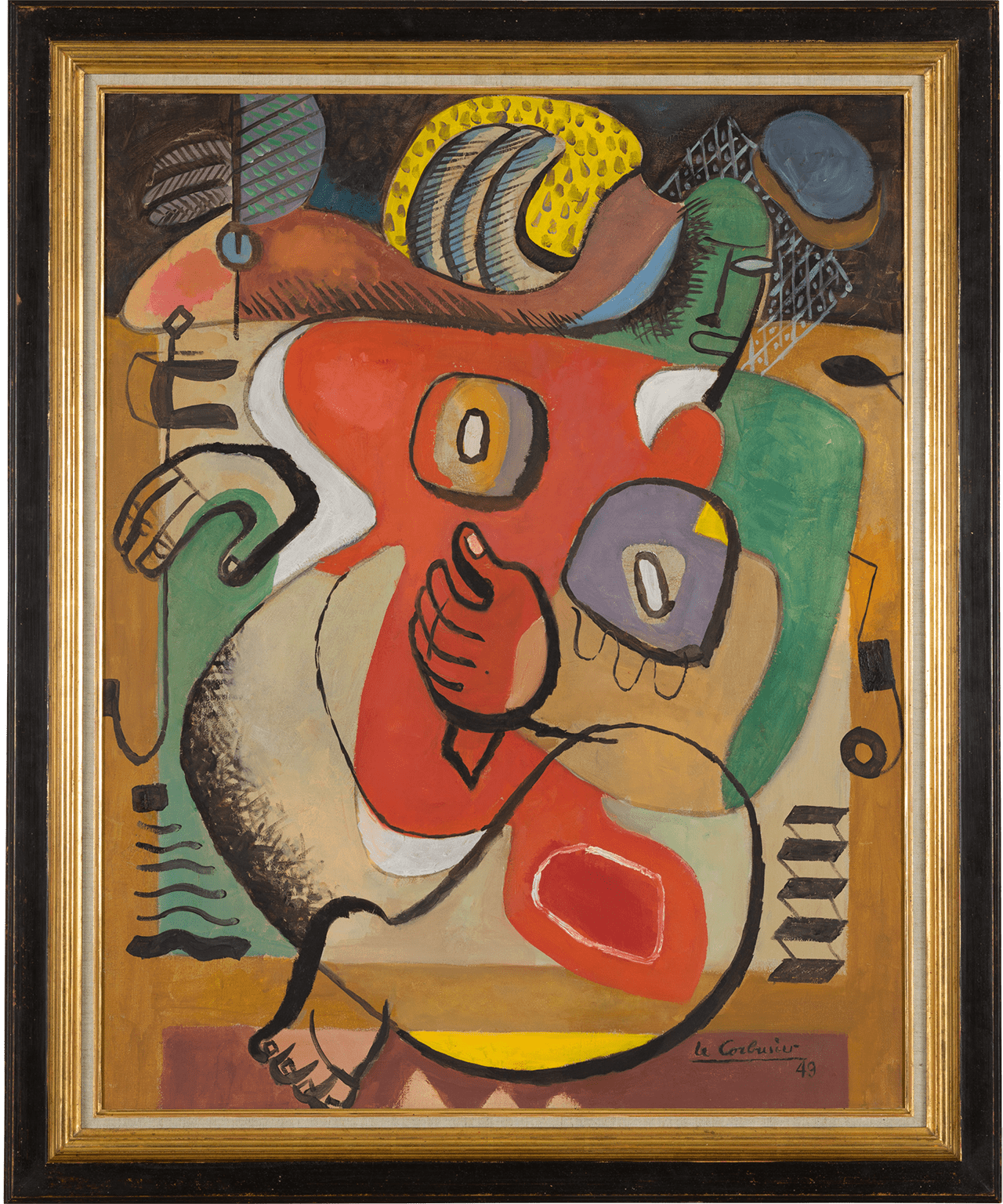
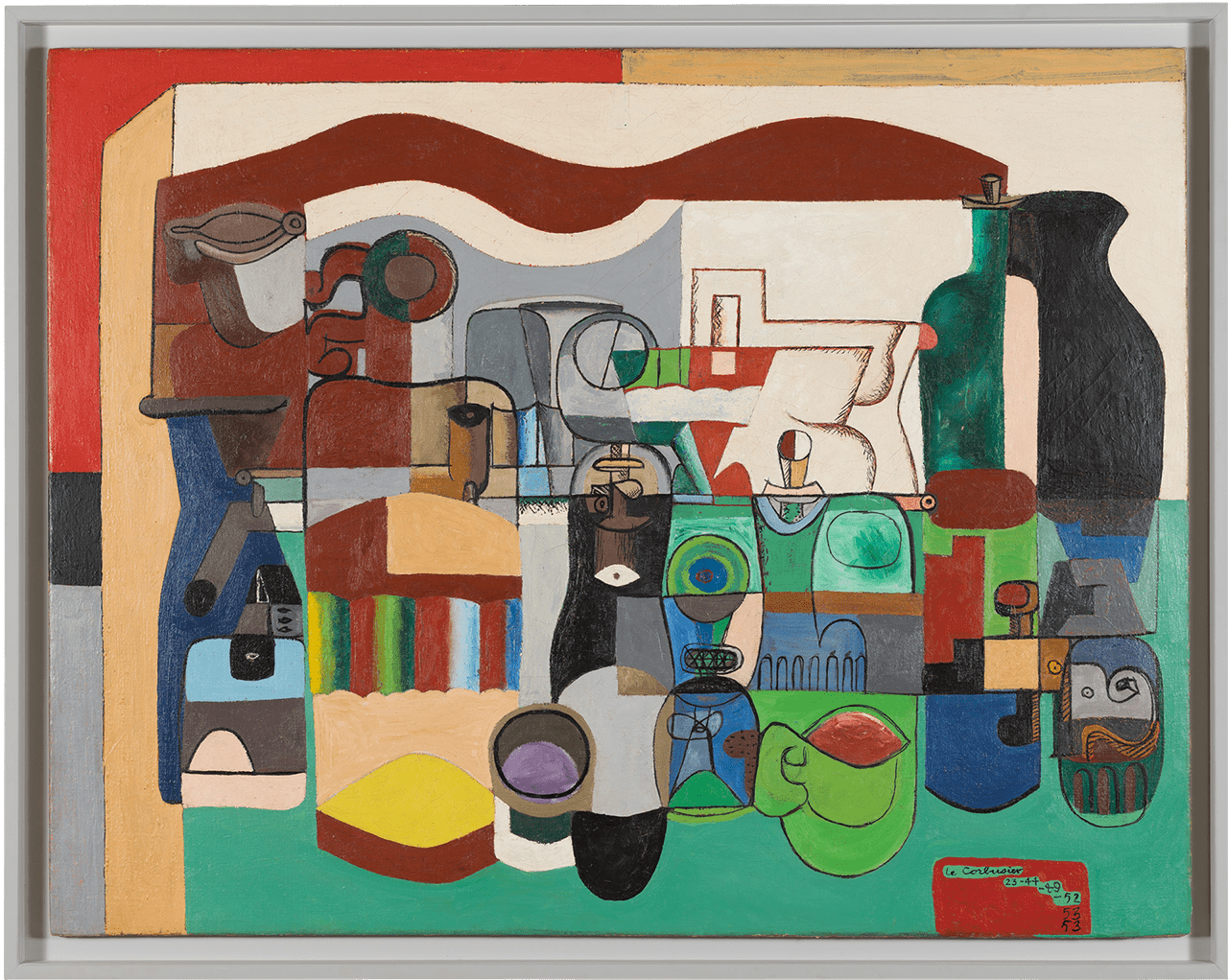
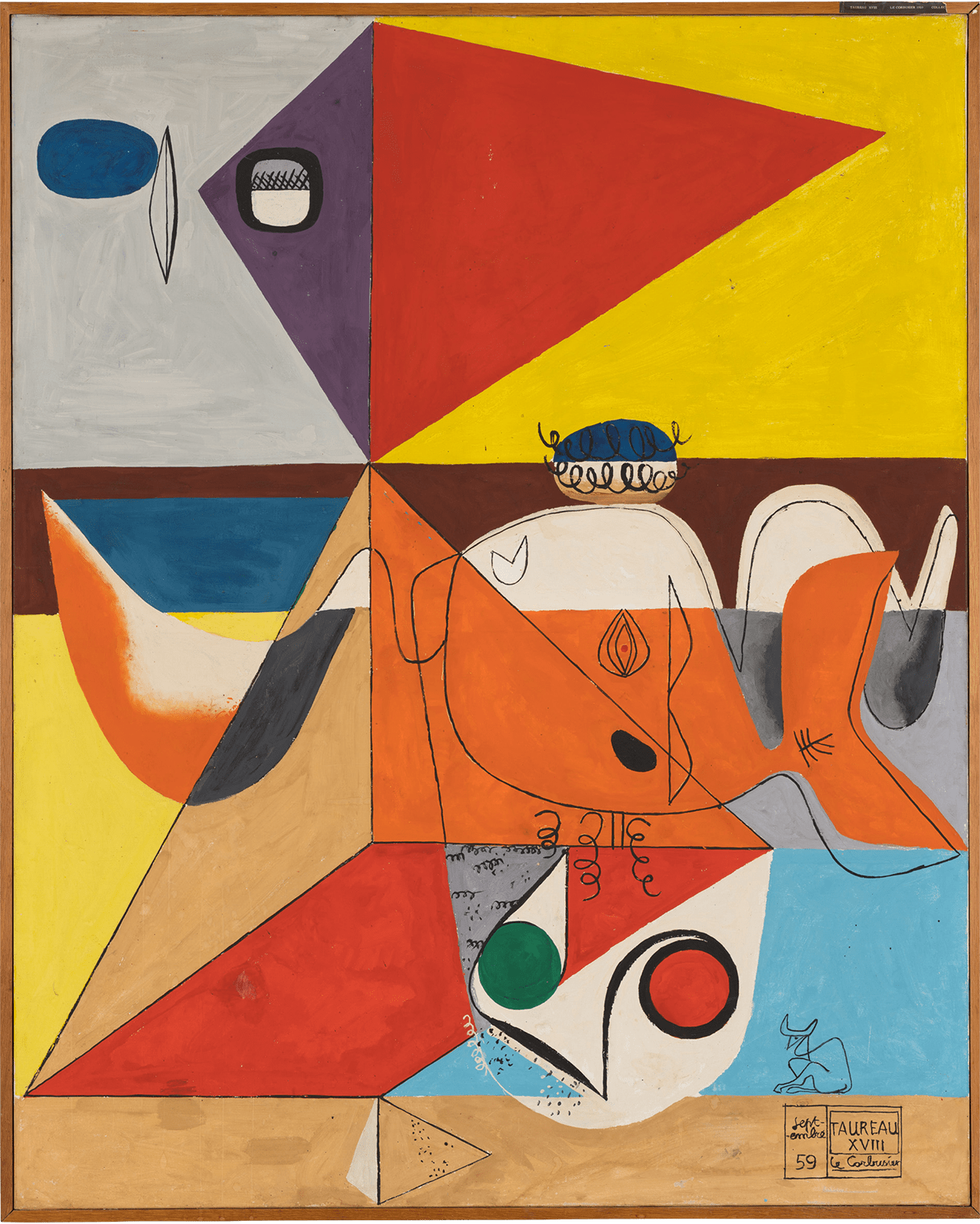
Paintings (Total 13)
